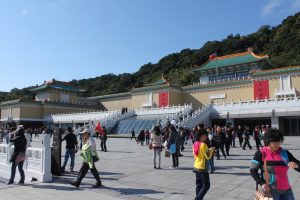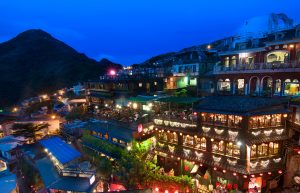TAIPEI 101
In the West, a tall building demands respect and attention from the spectators. To the Asians, it symbolizes a broader understanding and anticipation of things to come: we “climb” in order to “see further”.
Linking Taipei’s present and future, TAIPEI 101 Tower’s design is inspired by its cultural environment. Opening new possibilities, it embraces the future and moves forward with the world.
TAIPEI 101 Tower rises in 8 canted sections, a design based on the Chinese lucky number “8”. It is a homonym for prosperity in Chinese, and the 8 sections of the structure are designed to create rhythm in symmetry, introducing a new style for skyscrapers.
The segmented, subtly slanted exterior reduces the effects of wind and emergencies to mega-buildings. 8 floors comprise an independent section, reducing street-level wind caused by high-rises. Plants are laid out to ensure pedestrian safety and comfort. The building is designed to resemble a growing bamboo, a symbol of everlasting strength in Chinese culture.
http://www.taipei-101.com.tw/en/index.aspx
National Palace Museum(NPM)
On Nov. 12, 1965, the new NPM in Taipei opened internally, in which 1,573 artifacts including calligraphy, famous paintings, bronzes, tapestries, porcelains, jades, curios, rare books, and historical documents were exhibited in six separate galleries and eight different art galleries. On Nov. 13, 1965, the NPM was officially opened to the public.
The National Palace Museum (NPM) houses a collection of ancient Chinese artifacts, some of which came from The Palace Museum and the preparatory department of the Nanjing Museum (previously the “National Central Museum”); those that came from The Palace Museum originated from the Qing Court, and those that came from the preparatory department of the Nanjing Museum primarily originated from the Institute for Exhibiting Antiquities, which was previously owned by the Jehol and Shenyang temporary palaces. This signifies that the NPM’s current artifact collection contains Qing court artifacts from The Palace Museum, the Jehol temporary palace, and the Shenyang temporary palace.
Jiufen
It is said that long time ago there were only nine families in Jiufen. Before the roads on land were built, all materials were transported via ships. Thus a habit was formed that nine pieces of same object were purchased at one time for reservation. Hence, the place was called Jiufen.
Jiufen used to be the center of gold mining. It is located within the hills in northeast of Taiwan. The village is next to the mountain and facing the sea. In 1890, someone struck gold near Jiufen. The poor village with only nine families soon attracted prospectors of 4,000 families. The village once was gold city of Asia and called little Shanghai or little Hong Kong. However, with the decline of gold mining activities, Jiufen fades. Later, several movies chose to shoot here and the movies won international acknowledgement. For example, the film “A City of Sadness” has won first prize in Venice Film Festival and awakened people’s memory of Jiufen. It seems that the prosperous old streets, buildings, mines and the glamorous gold digging days are flashing before our eyes. The place is whispering its golden past. Now, there are many unique teahouses in Jiufen. These teahouses are best stops during visit to this mountain village. Also, there is the beautiful ocean view of Keelung outer sea.
The most prosperous shopping district is Jiufen Old Street. It goes through most of the village. There are many visitors on the street. Along the street there are shops vending the most famous country snack of Jiufen, yam dish and various local dishes. There are some historical items well reserved. The trip to Jiufen is full of fun and delights. Jiufen has many accommodation places provided by local residents. If you were not in a hurry, you may want to pick a nice inn and stay for the starlight and fishing lights at night.
http://eng.taiwan.net.tw/m1.aspx?sNo=0002016&id=290
Yehliu Geo-park
American cable news network CNN once reported on the unique scenery of “Yehliu GeoPark”, and likened the place to outer-space geology, dubbing it the most Mars-like rock environment on Earth. A visit is completed with an eyeful of spectacular rocks, including the world famous “Queen’s Head” and wonders of marine erosion such as the “Ice Cream Rock”, ”Bee Hive Rock”,” Ginger Rock” and “Candle Stick Rock”. The abundant geological landscape and site are enough to take one’s breath away and marvel at the uncanny works of nature!
http://tour.ntpc.gov.tw/en-us/Attraction/Detail?wnd_id=85&id=111495



